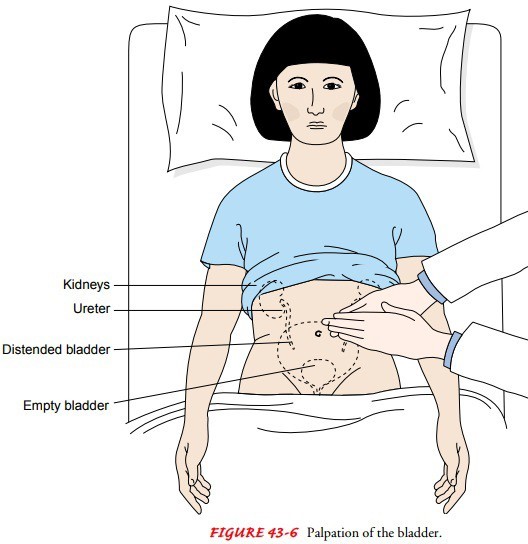A health care provider prescribes guaifenesin with dextromethorphan 1 tablespoon every 6 hours for a client who has a nonproductive cough.
How many milliliters should a nurse administer for each dose?
10 mL.
5 mL.
15 ml.
30 ml.
The Correct Answer is D
This is because the prescribed dose is 1 tablespoon, which is equivalent to 15 ml. Therefore, to get the amount of milliliters for each dose, you need to multiply 15 ml by 2, which gives you 30 ml.
Choice A is wrong because 10 ml is less than 1 tablespoon.
Choice B is wrong because 5 ml is equal to 1 teaspoon, which is one-third of a tablespoon.
Choice C is wrong because 15 ml is equal to 1 tablespoon, which is half of the prescribed dose.
Nursing Test Bank
Naxlex Comprehensive Predictor Exams
Related Questions
Correct Answer is A
Explanation
The nurse should first assess the client’s bladder for distention by palpating the lower abdomen between the symphysis pubis and the umbilicus.
This can indicate urinary retention, which is a common postoperative complication. The nurse should also measure the bladder volume using a bladder scanner if available.

Choice B. Inform the surgeon that the client’s status is wrong because the nurse should first assess the client before notifying the surgeon.
The surgeon may order interventions based on the assessment findings.
Choice C. Increasing the client’s fluid intake is wrong because increasing fluid intake may worsen bladder distention and discomfort.
The nurse should encourage fluid intake only after ensuring adequate urinary output.
Choice D. Administering pain medication is wrong because pain medication may not be indicated for urinary retention.
Pain medication may also cause urinary retention by relaxing the bladder muscles and impairing the micturition reflex.
Normal urine output is about 30 mL per hour or 240 mL in eight hours.
The nurse should monitor the client’s intake and output and report any signs of urinary retention to the surgeon.
Urinary retention can lead to infection, bladder damage, and renal impairment if not treated promptly.
Correct Answer is A
Explanation
“I will discard unused pills after six months after replacing it with a new vial.” This statement indicates that the client understands that nitroglycerin tablets lose their potency over time and need to be replaced regularly.
Choice B is wrong because nitroglycerin can cause headaches as a side effect, but the client should not stop taking it if they have chest pain. They can use Tylenol for pain relief.
Choice C is wrong because nitroglycerin can cause hypotension and dizziness, so the client should avoid lying down or changing positions suddenly after taking it. They should sit or stand still until the chest pain subsides.
Choice D is wrong because a tingling feeling on the tongue is a normal sensation when taking sublingual nitroglycerin and does not indicate an adverse reaction. It also confirms that the tablet is potent and effective.
Whether you are a student looking to ace your exams or a practicing nurse seeking to enhance your expertise , our nursing education contents will empower you with the confidence and competence to make a difference in the lives of patients and become a respected leader in the healthcare field.
Visit Naxlex, invest in your future and unlock endless possibilities with our unparalleled nursing education contents today
Report Wrong Answer on the Current Question
Do you disagree with the answer? If yes, what is your expected answer? Explain.
Kindly be descriptive with the issue you are facing.
